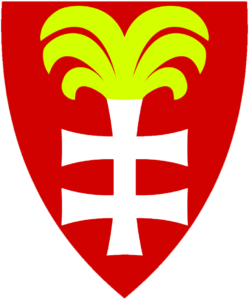Almás / Váralmás castle

Váralmás castle can be found in Transylvania in Szilágy County, in Romania. The village was first mentioned as Almás in 1239. It is just 12 km from the town of Bánffyhunyad (Huedin). The immediate area is called Kalotaszeg in Hungarian. The castle has seen many sieges and it has a rich history.
Its name appeared as Almásmunustra (1291), Almás (1335), Castrum Almás (1370), and Almás Wára (1459), and when it became part of Romania it was called Almașul mare in 1920. There used to be a Benedictine monastery before the Mongolian invasion of 1241. We can find just one piece of its carved stones built in the local Reformed church. The medieval church got its name after Saint Demeter in 1288.
After the Mongolian Tatars had gone, King Béla IV gave the place to Pál, his Country Judge for defending the line of the Danube against the Tatars so effectively. Pál used to have domains in Bihar County, too. He was a faithful man of the king, a good soldier who began to fight for Béla as early as 1229 and he helped the king to take the western areas back from the Germans in 1238. Later, he fought on the eastern side of the Tisza River Region. As for Almás castle, it was Lord Pál who had the first stone-walled structure built there.
His son, Voivode Miklós of Transylvania became unfaithful to his monarch, and the castle was taken away from him in 1278. After one of its first builders, the castle was also called Dezsővára as Dezső, son of Györk from the Borsa Clan. The castle was given to the Treasurer of King Lajos, Bebek György of Pelsőcz in 1370. The Bebek family had owned it for a century. It was Bebek Pál who lost the castle in 1469.

King Matthias Corvinus gifted the castle to his nephew, Voivode Dengelegi Pongrácz János of Transylvania in 1470. When he died, his son Mátyás inherited it. He left no heir, though and the castle was returned to the king in 1501. Almás castle was owned for a short time by Corvin János, the illegitimate son of King Matthias, then his widow, Frangepán Erzsébet inherited it.
Then, the castle was exchanged for other property and it went to Voivode Balassa Imre of Transylvania whose father married Perényi Orsolya, the widow of Dengelegi Pongrátz Mátyás. (I am intentionally using the Eastern name order for Hungarian names, out of educational reasons.) As it happened, the huge domains around Almás, Tövis, and Léta returned to the family.
Almás Castle was besieged in April 1540. Balassa Imre, the lord of Almás took the side of King Habsburg Ferdinand and as a result of this, King Szapolyai was trying to get his castle by force. He succeeded in doing so because of his general, Török Bálint of Enying. During the wars of the Dual Kingship, the castle was taken for a year by voivode Petru Rares of Moldova in 1545. After the death of King Szapolyai, General Castaldo came to Transylvania and on the way to Kolozsvár (Cluj, Klausenburg) he tried to take Almás castle but it was in vain.
Nevertheless, the guards ceded the castle to the Imperials when the widow of King Szapolyai, Isabella resigned. The castle was in very bad condition because of the sieges. Prince Báthory Zsigmond gave the castle to Csáky István who was the chief leader of the Transylvanian army. (1594) Csáky had the castle rebuilt; also, you can still see the pitiful remains of his palace in the village.

Csáky led his army against Voivode Vitéz Mihály aka Mihai Viteazul of Wallachia. General Basta came to the aid of the Voivode and besieged Almás castle in 1602. Later, it was Basta who assassinated the Voivode… Despite the surrender of the garrison, Basta had all the defenders killed on the spot. Also, he burned the whole castle.

Almás was rebuilt in 1627, though. Its importance has increased as it was in connection with Sebesvár castle, guarding the western borders of the Transylvanian Principality. When the Crimean Tatars took the castle in 1658, it suffered serious damage and it has been in ruins ever since. During the Tatar raids in the 17th century, the entire Almás valley was destroyed. Later, the stones of the castle were used for the buildings of the owners of the land who were the members of the Bethlen family.
The village of Almás (and its attached settlements) had 3,136 inhabitants in 1992. there were 1,881 Romanians and 1,118 Hungarians among them, along with 128 Roma / Gipsy people.

Dear Readers, I can only make this content available through small donations or by selling my books or T-shirts.






